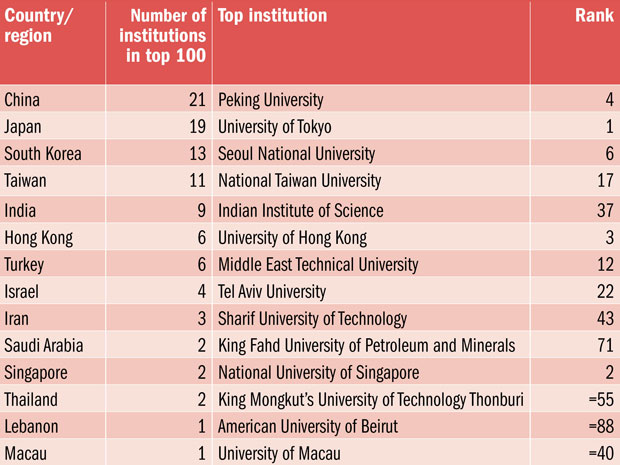Is Asia the next higher education superpower? This is the question posed in the title of a new book published by the Institute of International Education and the American Institute For Foreign Study. Within its pages, an essay by Tan Eng Chye, deputy president (academic affairs) at the National University of Singapore, and his colleague Kishore Mahbubani, dean of the institution’s Lee Kuan Yew School of Public Policy, attempts to get to grips with the issue. Their answer is a qualified “yes”.
The essay proclaims boldly: “The 21st century will be the Asian century. This is overdue and inevitable. A surge of investment in higher education is already taking place...Asia has already overtaken both North America and Europe in the number of universities and...graduates. Asian universities need only to improve their quality...to catch up with the West.”
If Asia’s universities are “bold and innovative”, they have every chance of moving up the global rankings and claiming superpower status, the authors argue.
The Times Higher Education Asia University Rankings 2015 certainly suggest an abundance of bold and innovative thinking among the leaders of the region’s top universities: for example, thanks to generous investment and a strong commitment to internationalisation, three science and technology universities from mainland China have entered the top 100 for the first time; in addition, several more established Chinese institutions, such as Shanghai Jiao Tong University, have risen up the table.
This has helped China to overtake Japan as Asia’s number one nation in the rankings.
It is this kind of rapid progress that spurred the creation of the THE Asia University Rankings in 2013. The overall World University Rankings are the gold standard – tracking institutions’ progress against 13 performance indicators. Over the 11 years they have been published, the world rankings have mapped the progress made by Asia’s leading institutions – but their global focus means they cannot provide the attention to local detail the region deserves.
Indeed, only 12 Asian universities make the current world top 100 and just 24 feature in the top 200. So this ranking, based on the same methodology as the WUR, satisfies the great hunger for more performance data on a wider range of exciting Asian institutions. Many more than the 24 that have already made the world rankings’ higher echelons show great potential – and many are embracing internationalisation and THE’s trusted international benchmarks to monitor their progress.
As Allan E. Goodman, president and chief executive of the Institute of International Education, puts it in Asia: The Next Higher Education Superpower?: “Governments in Asia see internationalisation of their colleges and universities as a means to capitalise on rapid globalisation and remain competitive in the global marketplace. Their progress in these regards will define Asia’s future involvement with the world and possibly redefine the way the world engages in higher education.”
Phil Baty
Editor, Times Higher Education Rankings

Register to continue
Why register?
- Registration is free and only takes a moment
- Once registered, you can read 3 articles a month
- Sign up for our newsletter
Subscribe
Or subscribe for unlimited access to:
- Unlimited access to news, views, insights & reviews
- Digital editions
- Digital access to THE’s university and college rankings analysis
Already registered or a current subscriber?
